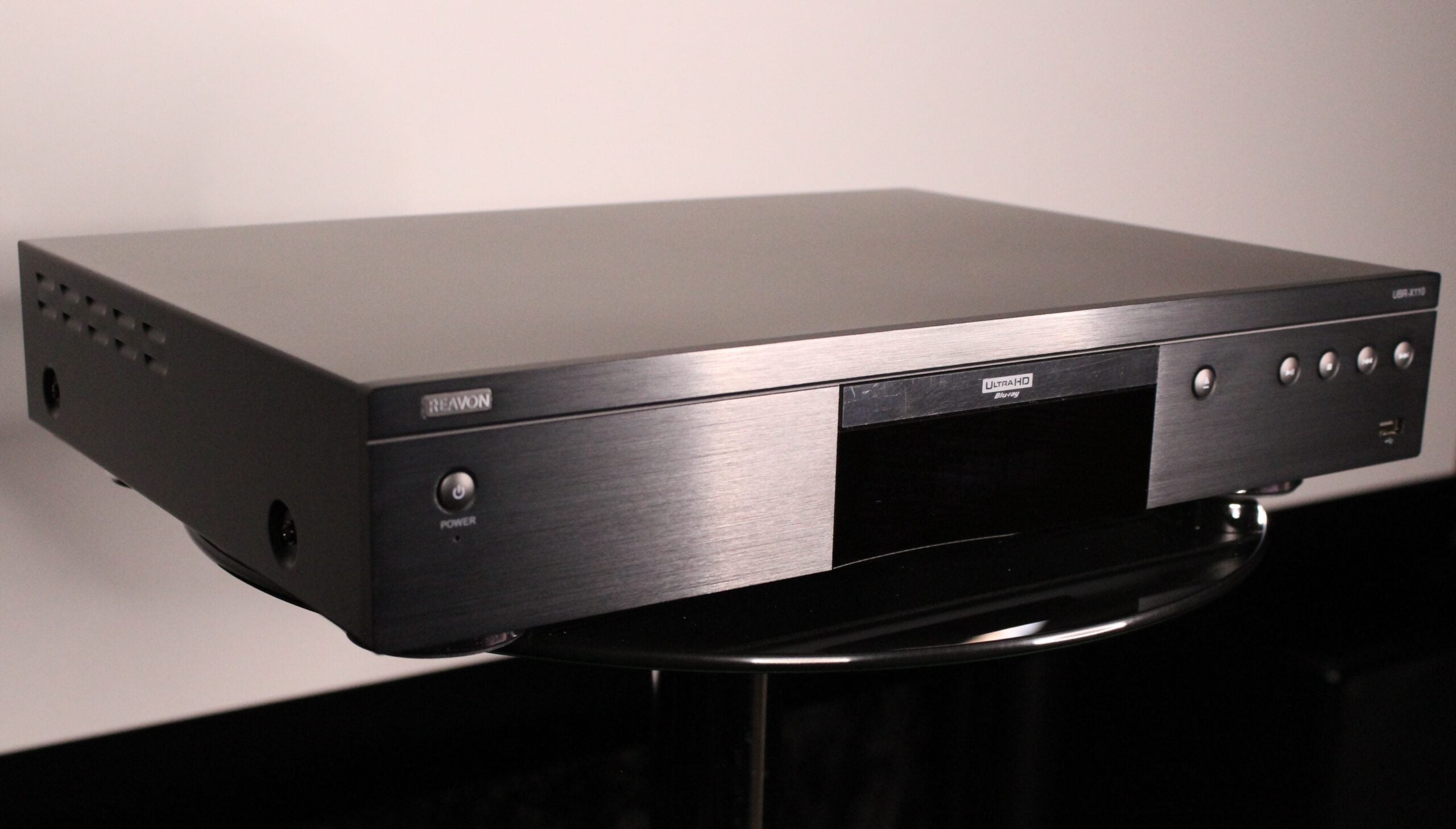LG 75QNED99 Review
Mini LED lighting, extensive local dimming and Nanocell colours revolutionises LG’s LCD fortunes
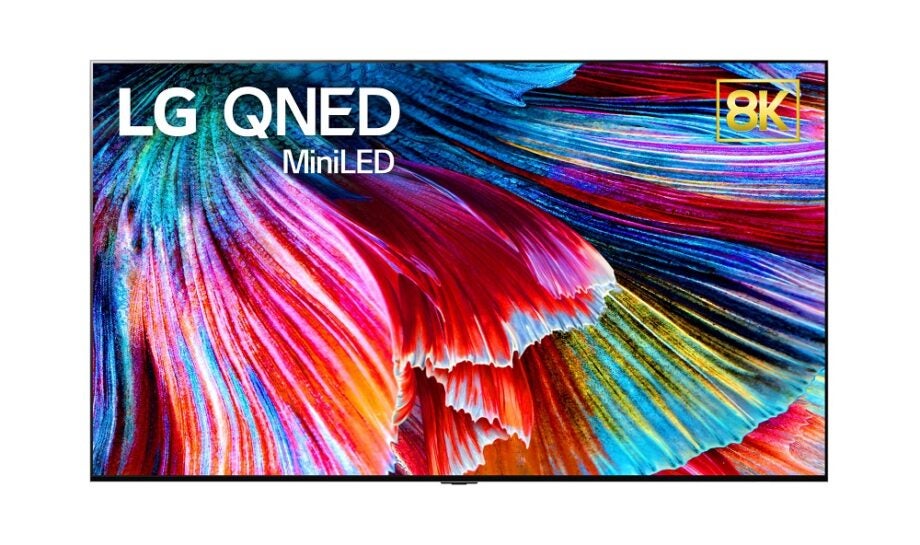

Verdict
While the lack of VRR support for gamers and, especially, the sudden backlight problems during very dark HDR movie scenes cost the TV a mark, LG’s debut 8K QNED TV puts the brand’s LCD TVs on the high-end map like never before.
Pros
- Often stellar picture quality
- Groundbreaking black levels for IPS
- Good sound quality
Cons
- Some backlight issues with the darkest scenes
- No VRR support
- Expensive versus 4K TVs
Key Features
- Native 8K resolution8K TVs carry native pixel counts of 7680 x 4,320 – four times as many pixels as 4K TVs
- Mini LED lightingThe backlight uses much smaller LEDs than regular LED TVs, so that more of them can be fitted to deliver much more local light control
- WebOS 6.0The much-changed version of LG’s much loved smart TV OS.
- 4K/120Hz and ALLM gaming supportSupports gaming at 4K resolutions and 120Hz frame rates, and can automatically switch the TV into and out of its Game mode
Introduction
While the 75QNED99 is far from the only high-end LCD TV LG has made, it’s arguably the first one that might just have what it takes to be mentioned in the same breath by discerning AV enthusiasts as the brand’s legendary OLED sets.
The reason for this is that it uses the new Mini LED technology sweeping the premium LCD TV world this year. As its name suggests, this involves lighting the screen using much larger numbers of much smaller LEDs.
This is not an entirely new idea; TCL started shipping Mini LED TVs in the US in 2019. But it’s only this year that the technology has ‘gone viral’. And as we’ll see, it arguably benefits LG’s LCD TVs more than those of any other brand.
Availability
- UKRRP: £5999
- USARRP: $4999
- EuropeRRP: €6499
- CanadaRRP: CA$6999.99
- AustraliaRRP: AU$7799
The 75QNED99 is widely available across the UK and Europe now, and is expected to launch in the US by end of August. It typically costs £5999 in the UK, $4,999 in the US and around €6,499 in Europe.
This is a pretty hefty price by today’s standards. You can get LG’s own 77-inch 77C1 OLED TV for just £3,600 at the time of writing, after all.
However, the 75QNED99 is 8K while the C1 OLED is 4K, and is also on a par than Samsung’s flagship 8K Mini LED TV for 2021, the QE75QN900A (in fact, the Samsung was a grand more expensive prior to receiving a recent price cut).
Design
- Crescent-shaped desktop stand
- Slender profile and narrow frame
- ‘Hard’ IPS screen with wide viewing angle support
The 75QNED99 isn’t quite as robustly built as some of the flagship TVs we see these days – including LG’s OLED models. Nor is it much of a show off, taking a less is more approach with its super-thin frame and elegant crescent stand. I suspect this will actually suit many potential buyers just fine, though.
The set is also impressively trim round the back, despite using a direct lighting system that positions its LEDs behind the screen rather than around its edges. This, presumably, is a benefit of the switch to Mini LEDs.
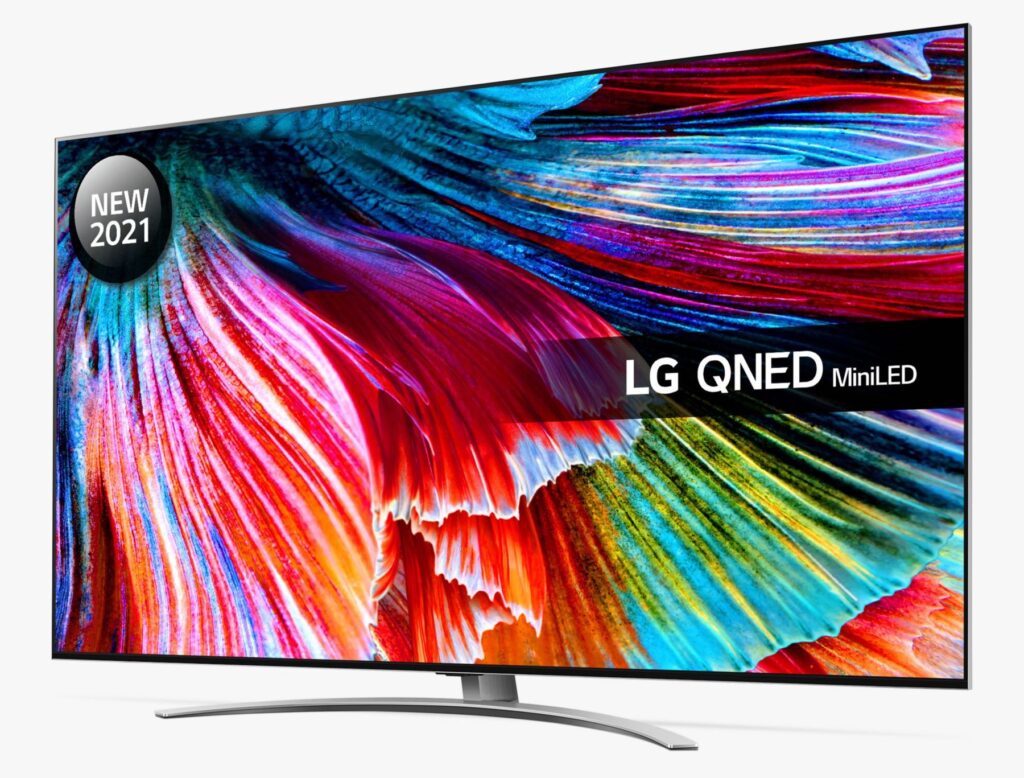
Like pretty much all LG LCD TVs, the 75QNED99 uses an IPS panel. This means it can support wider viewing angles than most TVs that use the alternative VA panel. The IPS panel would also usually mean, though, that it struggles when it comes to handling dark scenes and contrast – but maybe the Mini LED technology will have something to say about this.
Features
- Native 8K resolution
- Mini LED technology with local dimming
- Nanocell colour technology
The 75QNED99’s features read like a checklist of all the most important cutting edge features currently sweeping the TV world.
For starters, it sports a native pixel count of 7680 x 4320, making it an 8K rather than 4K TV. This may be controversial for some; why bother with an 8K TV when aside from a few YouTube videos native 8K content is practically non-existent?
There are a few more 8K sources supposedly in the pipeline (though they’ve been stuck in that pipe for quite some time now). Probably the main reason to consider an 8K TV now, though, is that provided its image processing is good enough, it can increase the dots per inch with which 4K sources are presented, making pictures look more three-dimensional and ‘real’.
In the 75QNED99’s case, the upscaling system comes courtesy of LG’s new, AI-toting Alpha 9 Gen 4 processing engine. This is the same processor we’ve already seen working to great effect on LG’s 2021 OLED TVs – though optimised for LCD screens, of course.
The miserable upscaling often witnessed with early HD TVs back in the day has definitely not continued into the 8K world, despite the monumental volume of extra pixels the 75QNED99 is having to ‘calculate’. Unless, anyway, you’re trying to watch grubby, heavily compressed standard definition sources – which surely you will be trying to do as little as possible if you’ve spent big on an 8K TV.
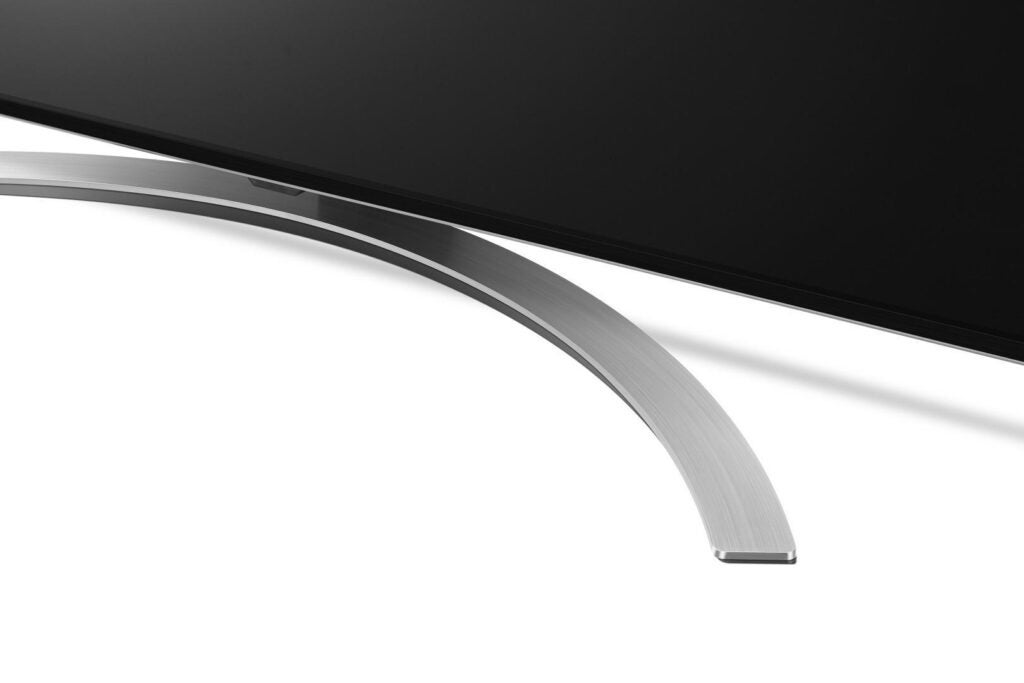
Much more significant than the 8K pixel count, it turns out, is the 75QNED99’s Mini LED lighting. Especially as it partners its much smaller LEDs with a large number of local dimming zones. These proved so numerous, in fact, that I couldn’t count them. I’d be surprised, though, if there aren’t comfortably more than a thousand, and maybe something approaching two thousand.
This extreme local dimming situation (versus anything we’ve seen before from LG) actually reveals the true attraction of Mini LED. Having more smaller lights to work with only gets you so far in picture quality terms; Mini LED only gets truly exciting when you start to control all those LEDs down to a much more localised level than was possible before.
The 75QNED99’s IPS panel isn’t driven as brightly as most flagship VA TVs. Taking a brightness reading from a white HDR window occupying 10% of an otherwise black screen, the 75QNED99 tops out at around 1180 nits. This is beyond OLED’s current capabilities, crucially, but some way short of the 1500 nits and (in one or two cases, substantially) more some 8K LCD rivals can muster.
Colour comes courtesy of LG’s Nanocell system. This introduces special particles into the panel that absorb unwanted light, resulting in refined wavelengths that in turn deliver richer, more accurate and more subtly delineated colours.
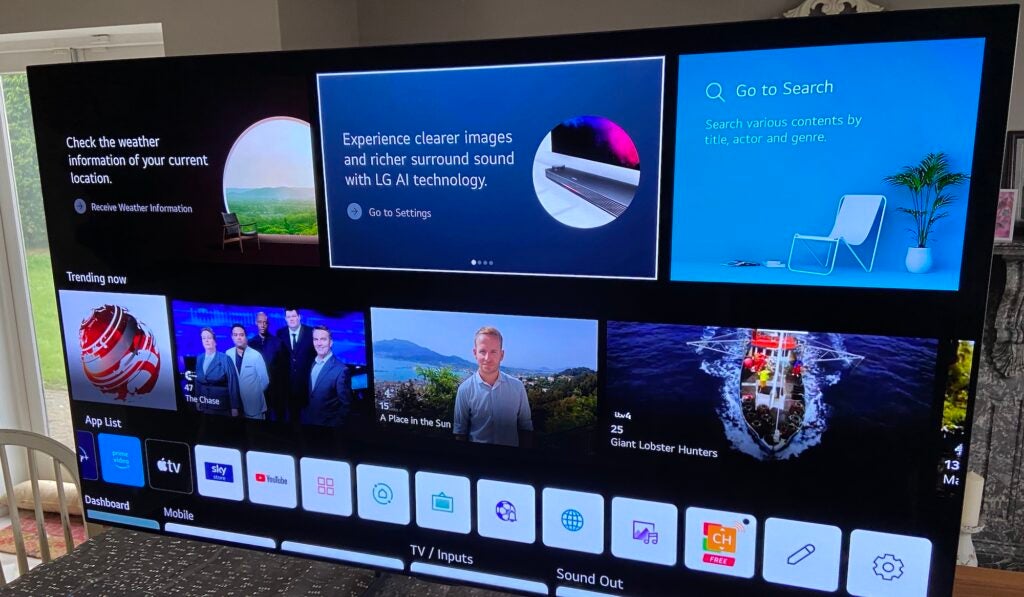
The 75QNED99’s smart features are provided by LG’s new webOS 6.0 system. This represents the first really big shift in webOS we’ve seen since the award-winning interface was first introduced. And actually, surprisingly, it’s not an entirely unmitigated success.
The most controversial move, for me, is the shift to a full-screen home screen, rather than the old horizontal menu ‘strip’ superimposed along the bottom of the screen. Going full screen does enable LG to provide more content links and options in one hit, but it also means you can’t keep watching TV as you browse, as well as making the menus look more potentially overwhelming and complicated to smart TV newbies.
WebOS 6.0 doesn’t feel like it’s making the most effective use of some of the prime real estate spots on the new home screen, either, and it’s a pity that scrolling down from the home screen only takes you to surprisingly limited and impossible to reorganise set of ‘shelves’ devoted to specific video streaming apps.
There are some good things too, though. The new content search feature is superbly comprehensive and well represented. The new interface’s focus on highlighting recommended content based on analysis of your viewing habits becomes increasingly welcome (after an inevitably rather ‘random’ start) over time. Voice recognition and control is effective, and the new Magic remote design is both more comfortable to hold and less demanding to use, while retaining the unique ‘point and click’ functionality that’s served LG so well for so long.
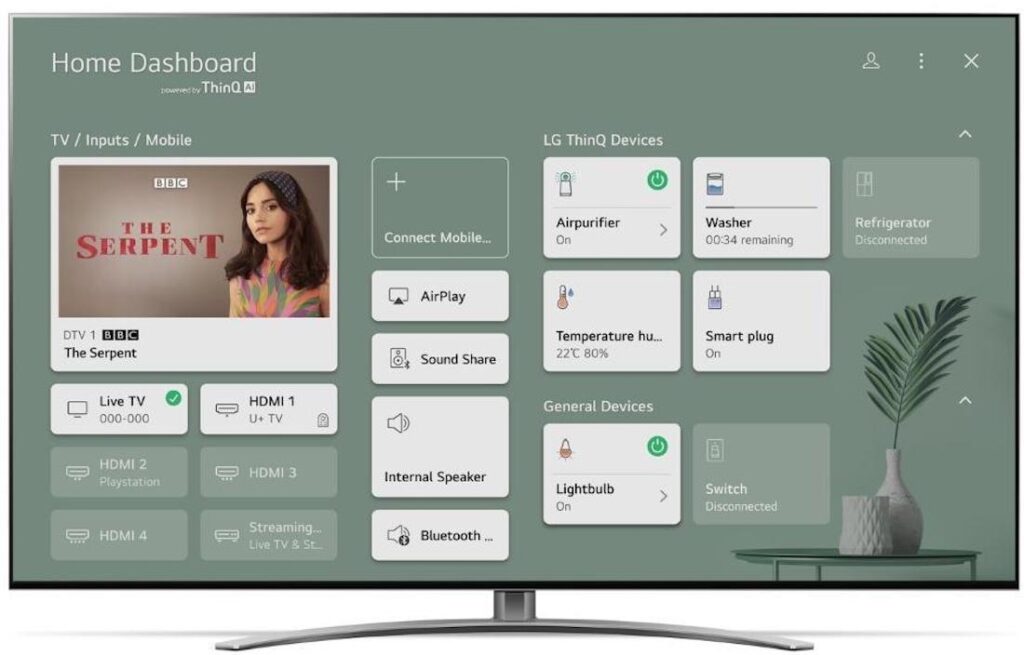
The 75QNED99 supports three of the big four HDR formats: HDR10, HLG and Dolby Vision. As ever with LG, though, there’s no support for the HDR10+ format which, like Dolby Vision, adds extra scene by scene data to the HDR stream that compatible TVs can take advantage of. There is far less content out there mastered in HDR10+ than there is Dolby Vision, but it’s still a shame LG doesn’t support both ‘active’ HDR formats when TVs from the likes of Philips and Panasonic do.
The 75QNED99’s connectivity, finally, is a surprisingly mixed bag. There are four HDMI ports, all of which support both 4K at 120Hz and 8K at 60Hz. However, there’s no support for variable refresh rates. This is very surprising for such a premium TV from LG, of all brands.
Picture quality
- Excellent black levels
- Impressive upscaling abilities
- Can experience some backlight issues
Despite its viewing angle advantage, its limitations with contrast and black levels have meant that I haven’t typically been a fan of LG’s IPS LCD TV technology. The introduction of Mini LED, however, revolutionises what IPS is capable of.
The way fade to blacks go pretty much perfectly black, for instance, with no trace of underlying greyness, is totally unprecedented for IPS technology. In fact, the results are essentially indistinguishable from what the very best VA panels can achieve. This full blackness is achieved, too, without the distracting ‘switching the whole backlight off’ trick LCD TVs sometimes resort to in a bid to achieve full screen darkness.
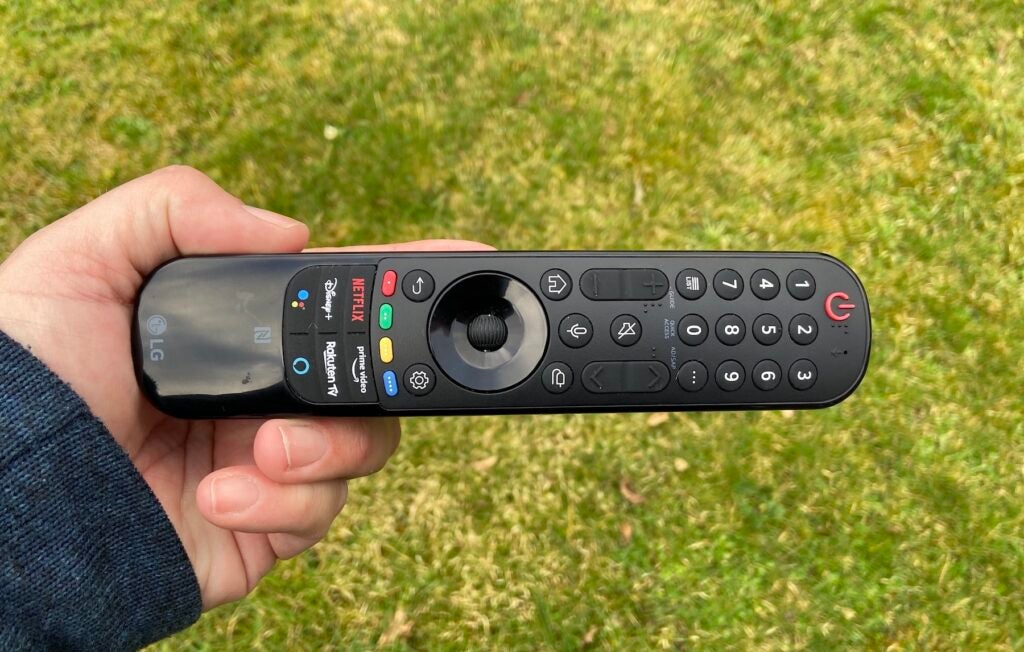
Black levels continue to be spectacular with dark scenes (as opposed to full fades to black), with the 75QNED99 typically managing to combine really bright objects with extremely dark areas in the same shot while generating practically no sign of backlight clouding/blooming that’s usually such an IPS issue.
In fact, for some of the time, at least, the 75QNED99 fares even better than Samsung’s 75QN900A when it comes to reproducing bright and dark content in the same shot. Chiefly because it doesn’t dim down the brightness of objects that appear against very dark backgrounds as much as the Samsung set does with its most attractive picture presets. It’s hard to imagine a better example of the benefits Mini LED technology can bring than seeing the sort of clouding-free contrast the 75QNED99 can deliver from an IPS panel.
Having said all this, there are a couple of riders to the 75QNED99’s contrast talents that I’ll come back to later.
The combination of the 75QNED99’s impressively consistent brightness output and the joys of Mini LED/advanced local dimming helps LG’s new 8K set retain impressive amounts of subtle detail in dark corners of HDR pictures, too. Another thing that’s not always been the case with LG LCD TVs.
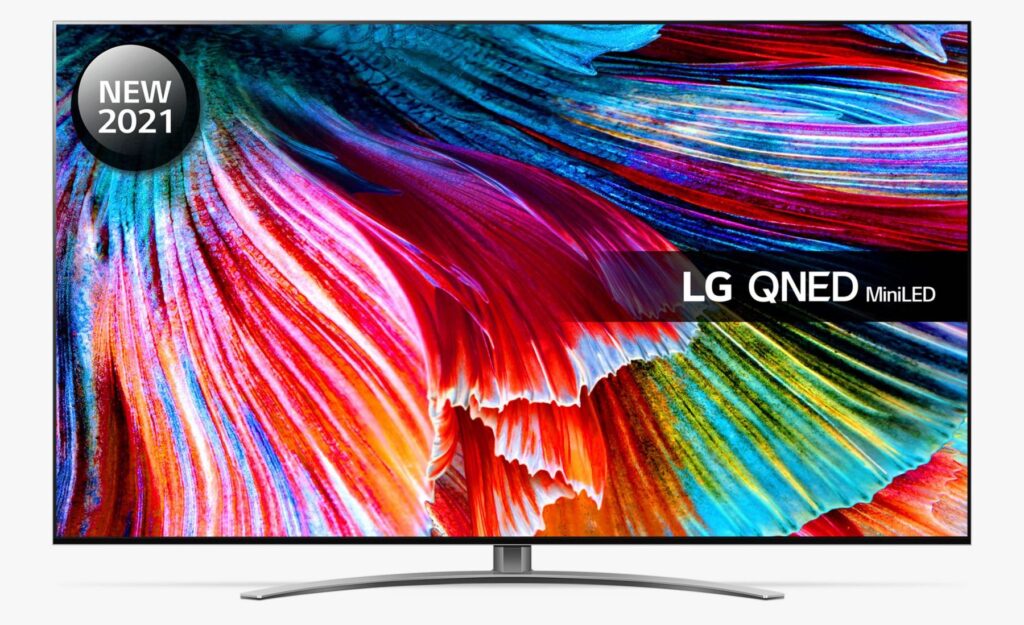
In fact, the 75QNED99’s sharpness and detail is generally excellent. Native 8K demo reel footage delivers all the advantages I’d expect when it comes to immediacy, realism, three-dimensionality and depth of field, while also looking phenomenally pure and detailed.
Upscaling of 4K sources is mostly great too. Especially when it comes to how natural the upscaled images look. LG’s processor does an outstanding of adding in the necessary tens of millions of extra pixels without causing really any obvious unwanted processing side effects. Source noise is expertly excised from the upscaled picture; the sort of fizzing noise that can impact areas of particularly fine texture with some rival TVs is non-existent; grain is maintained without being exaggerated; and there’s no sense of exaggerated object edging or extra motion lag.
In fact, motion on the 75QNED99 is almost as much of a success story as it is on LG’s 2021 OLED TVs, with the new Cinematic Motion setting again calming the worst aspects of panel judder and motion blur/lag without causing the picture to look processed or over-smoothed.
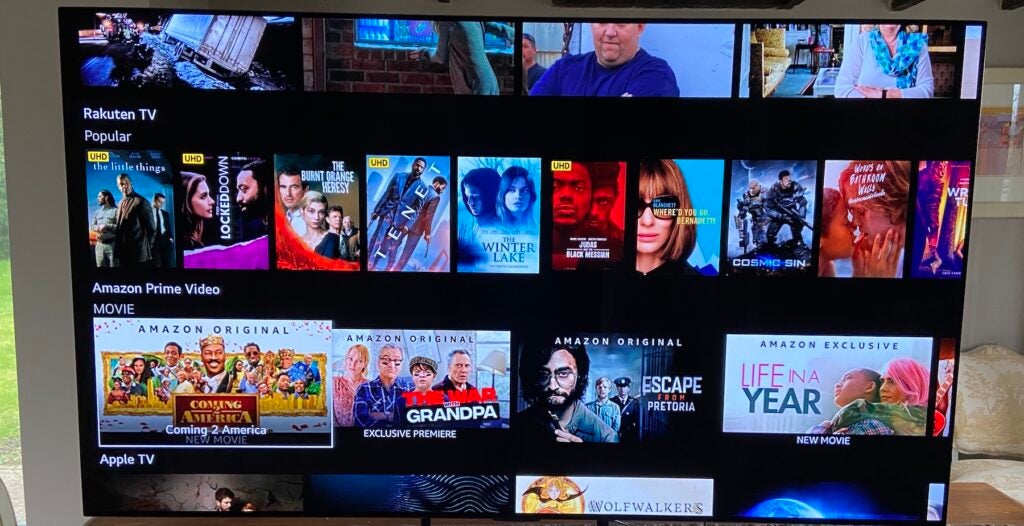
The 75QNED99’s upscaling doesn’t deliver pictures as sharp and detailed looking as the upscaled images of rival 8K TVs from Sony and, especially, Samsung – even with LG’s impressive AI Picture Pro processing in play.
But then in Samsung’s case the extra sharpness can be accompanied by unwanted side effects/noise. And if you use the most ‘accurate’ Movie or Filmmaker Mode picture presets on a new Samsung 8K TV, while this noise reduces, the sharpness levels of upscaled content end up looking pretty close to those of the 75QNED99.
It’s worth noting, too, that even HD sources are watchable – almost enjoyable, even! – on the 75QNED99. This has not been the case with every 8K TV I’ve seen, but it’s pretty handy given that actually, sadly, most of us still spend most of our time watching HD.
The 75QNED99’s colour performance is almost as startling as its Mini LED-inspired contrast. I’ve long been a fan of the combination of richness, subtlety and naturalism associated with LG’s Nanocell colour system, and this continues with LG’s new 8K hero. The results are images, especially with HDR/wide colour gamut sources, that often look really breathtakingly immersive, realistic and, for want of a better word, beautiful.
The exceptional colour refinement helps sell the screen’s ultra-high resolution too, and because there’s so much less backlight clouding to worry about on the 75QNED99 compared with previous LG LCD TVs, colour saturations are able to maintain much more consistency between scenes and right across the screen.
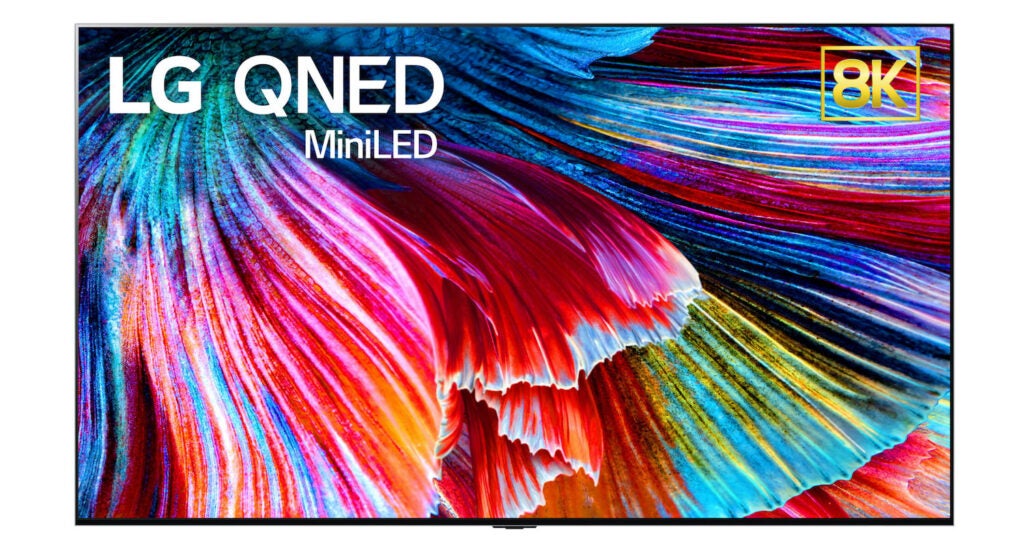
The 75QNED99 might not measure as bright as some of its high-end LCD rivals, but it makes the most of what it’s got. Impressive dynamic tone mapping ensures areas of peak brightness still look satisfyingly intense, and the baseline brightness of the image remains extremely consistent, leading to an impressively even and therefore immersive experience.
One final high point in the 75QNED99’s picture arsenal is its gaming performance. Something about the TV’s combination of Nanocell colour, pristine processing, tone mapping, light control and sharpness works wonders with game graphics – especially with native 4K HDR titles.
Assassin’s Creed Valhalla, for instance, has never looked better on any TV I’ve played it on. The screen’s impressive 15.7ms response time in Game mode keeps the action feeling tight and reactive, too. The only issues are that dark areas in games with particularly aggressive HDR, such as Call Of Duty Black Ops: Cold War, can become slightly grey, and that there isn’t any VRR support to eke out that last bit of purity and performance from games that don’t deliver constant frame rates.
While the 75QNED99’s pictures deliver a huge advance on any previous LG LCD and frequently look nothing short of jaw-droppingly good, they’re not perfect. And the biggest issue still seems to relate to the screen’s IPS panel, for while most dark scenes look gangbusters versus any previous IPS panel, a few especially dark ones cause some backlight headaches.
Throughout the sequence in 1917 on 4K Blu-ray where Corporal Schofield wakes up in almost total darkness after being knocked unconscious on a stairwell, for instance, the backlight goes through some very distracting behaviour as the local dimming system wrestles with the content’s near-black and constantly shifting light levels.
Some parts of the picture go completely and unnaturally ‘full black’, losing detail in the process, while elsewhere the picture suddenly and surprisingly breaks down into quite large and defined areas of backlight bloom. Put these two extremes together on the same screen and the sequence becomes really quite hard to watch as the hyperactivity of the backlight becomes almost all you can see.
Mercifully, scenes as dark and difficult as this one are pretty rare – though it was not the only scene I came across during my tests that presented at least one or two of the backlight issues so evident in the 1917 sequence.
The only trick I found that substantially reduced the blooming (but not the forced, hollowed out look to the very darkest areas) was turning off the dynamic tone mapping. But this requires you to swallow a pretty substantial reduction in the general brightness of HDR content.
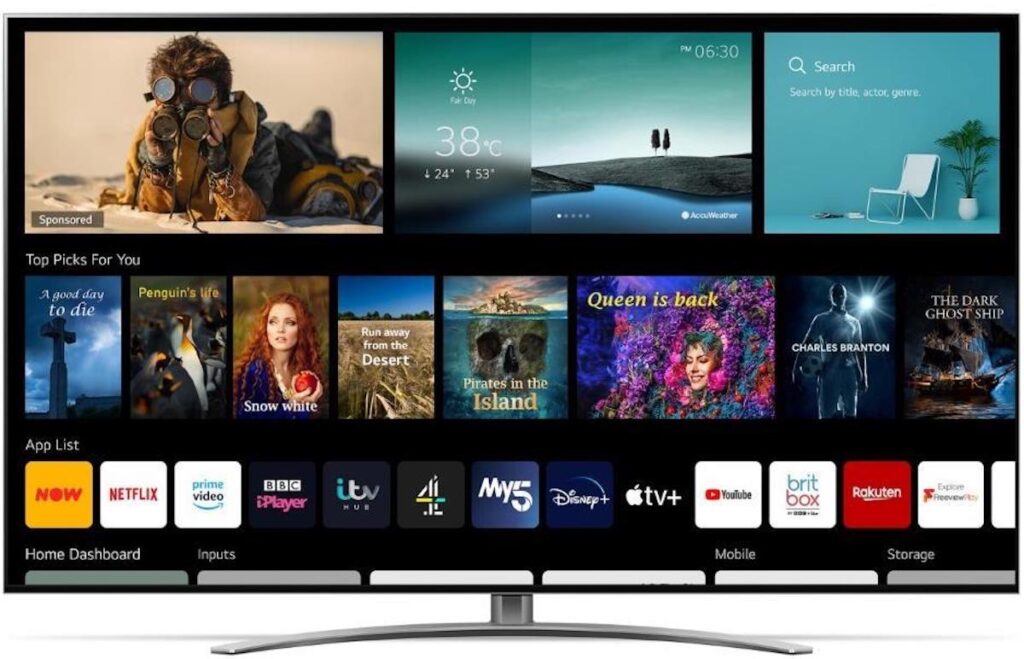
Backlight blooming also becomes much more apparent if you have to watch the 75QNED99 from much of an angle, undermining the wide viewing angle credentials of its IPS panel, and there can be some slight shadow detail loss in dark areas with standard dynamic range images and some of the Dolby Vision presets.
Audio quality
- Good dialogue reproduction
- Not the most dynamic with Atmos content
The 75QNED99’s in many ways ground-breaking pictures are joined by a typically assured LG audio performance.
Starting in Dolby Atmos mode, the speakers deliver an impressively large sound stage that spreads comfortably beyond the side and top edges of the screen. The 75QNED99 is more effective in this respect, in fact, than the Dolby Atmos modes of any recent LG OLED TVs.
Dialogue sounds richer and more powerful than it does on LG’s current OLED TVs too, and the sound stage avoids that sense of only appearing to exist behind the screen that you often hear with TVs that use rear mounted speakers. The projection is more sideways than forward, perhaps, but the effect still feels reasonably direct and dialogue feels like it’s coming from the onscreen action.
The speakers don’t sound harsh with shrill trebles, while at the other end of the audio spectrum the 75QNED99 can produce impressive amounts of bass without the speakers starting to buzz or the drivers dropping out when the going gets really tough.
The one area where the 75QNED99 falls short with Dolby Atmos is its delivery of really dense, climactic moments. Just when you expect the sound to really let rip, the speakers actually seem to go into self-preservation mode, actually withdrawing rather than opening up.
Oddly this does not happen if you play an action film with a DTS soundtrack, suggesting that the issue is more to do with the implementation of Dolby Atmos rather than limitations in the TV’s speakers.
Replacing the Dolby Atmos decoding with the 75QNED99’s AI Sound Pro mode sees the set delivering a much louder, denser, more dynamic and more satisfying soundstage that does manage to grow with big audio moments rather than backing off. In fact, the AI Sound Pro mode can be overly aggressive at times, causing the loudest moments to become a little too dense and harsh.
Despite its niggles, though, it’s important to conclude by saying that the 75QNED99 remains a pretty class audio act by regular TV standards.
Latest deals
Should you buy it?
You want more HDR brightness than OLED can give you. The 75QNED99’s Mini LED lighting produces more peak and consistent full-screen brightness than the brands OLED TVs can achieve – which plays very nicely with HDR images.
You watch a lot of very dark stuff! While the move to Mini LED lighting has transformed the sort of contrast you might now expect of LG’s LCD TVs, very dark scenes can still cause some distracting backlight issues.
Final Thoughts
For the vast majority of its day-to-day life, the 75QNED99 is a fantastic TV. Introducing Mini LED and thousands of dimming zones delivers the sort of spectacular contrast performance I’d honestly never expected to see from an LCD screen. LG’s NanoCell technology combines with this new contrast performance and a good amount of brightness to beautifully rich but refined effect. And fine details and sharpness are outstanding thanks to the screen’s native 8K resolution and LG’s latest much-improved motion and upscaling processing.
Samsung’s 75QN900A 8K TV is capable of substantially more peak brightness and suffers much less with backlight distractions during very dark scenes than the 75QNED99. It isn’t as consistent with its brightness, though.
Another option, of course, is to forego 8K and go for one of LG’s 4K QNED TVs, which costs roughly half as much as their 8K siblings. Though it’s important to note that these TVs benefit from fewer local dimming zones, and only get LG’s less powerful Alpha 7 Gen 4 video processor rather than the Alpha 9 system found in the QNED99s.
Finally, if you’re willing to forego the 8K resolution and some HDR-friendly brightness, LG’s 77-inch OLED77G1 OLED TV is available for £4,500. LG’s 8K OLED TVs remain prohibitively expensive, though; the upcoming new OLED77Z19, for instance, is scheduled to sell for £20k!
How we test
We test every TV we review thoroughly over an extended period of time. We use industry standard tests to compare features properly. We’ll always tell you what we find. We never, ever, accept money to review a product.
Used as the main TV for the review period
Tested for more than a week
Tested using industry calibrated tools, discs and with real world use
Tested with broadcast content (HD/SD), video streams and demo discs
FAQs
This is LG’s name for TVs that use Mini LED backlighting to provide more backlight precision.
There isn’t much native 8K content at the moment – just a few YouTube videos in most territories. More is being promised for the future, but there isn’t likely to be much more for some time, in truth. The best 8K TVs, though, use excellent new AI-based upscaling to convert 4K into 8K surprisingly effectively.
You can play at 4K resolution in 120Hz frame rates, and the set can automatically switch between its Game and other picture presets thanks to its support for the HDMI 2.1 ‘ALLM’ feature. There’s no variable refresh rate support, though.






